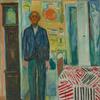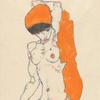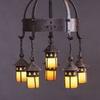Explore How Landscapes Inspired Photographers Through the Ages in New Chrysler Exhibition
- NORFOLK, Virginia
- /
- March 17, 2016
Travel to lands near and far, and survey the history of photography in this exhibition of images rarely on view at the Chrysler Museum of Art.
Whether pastoral or polluted, the landscape has been an enduring subject in the history of photography. The exhibition, New Light on Land, draws from the Museum’s rich photography collection to explore how nature has inspired photographic innovation and creativity since the advent of the medium.
The exhibition complements Edward Burtynsky: Water, the museum’s spring keynote exhibition. While Burtynsky’s photographs depict bodies of water around the world, New Light on Land focuses on the other 29 percent of the world’s surface, displaying snowy mountain peaks, lush forests and fields of wheat. The show offers eclectic viewpoints, from environmentalist statements to grand visions of the untrammeled earth. Both exhibitions are on view until May 15 and admission is free.
The works were selected from the Chrysler’s photography collection by curators Seth Feman, Erik Neil and Ed Pollard. “We scoured the Chrysler’s incredible collection of landscape photographs, looking through hundreds of images until we arrived at the current selection,” said Seth Feman, Chrysler’s Curator of Exhibitions and Acting Curator of Photography. “We were looking especially for images that tell unique stories about how people have envisioned the land and how the camera has shaped that vision. The results are quite diverse.”
Some of the earliest photographs in New Light on Land show the religious zeal that motivated travelers to use the new technology to document the world as it had never been captured on canvas. Beginning in the mid-19th century, Francis Frith undertook a quest to portray Biblical locales, ultimately presenting more than 500 images to the public in eight published works. His 1857 photograph of the Temple of El Karnak brought Ancient Egypt to the hands of Victorian audiences.
Other photographers featured in the exhibition were motivated by a desire to encourage empathy. Dorothea Lange’s gelatin-silver print “Men Cradling Wheat, Near Sperryville, Virginia” shows the grace and dignity possessed by the men working the earth. As a photographer for the Depression-era Farm Security Administration, Lange succeeded in the project’s goal to “introduce America to Americans.”
The contemporary photographs included in New Light on Land show modern perspectives with deadpan humor, such as Judy Natal’s “Beauty.” The 2002 photograph shows a cluster of palm trees forming a backdrop for leaning letters spelling out “Beauty.” Natal is among a wave of contemporary photographers exploring human interactions with nature. The impact of this style of landscape photography is felt in the work of Burtynsky, whose current exhibition at the Chrysler Museum explores the imprint of humans on water around the world.
New Light on Land and Edward Burtynsky: Water are on view until May 15 at the Chrysler Museum of Art. Admission is free.









100x100_c.jpg)





